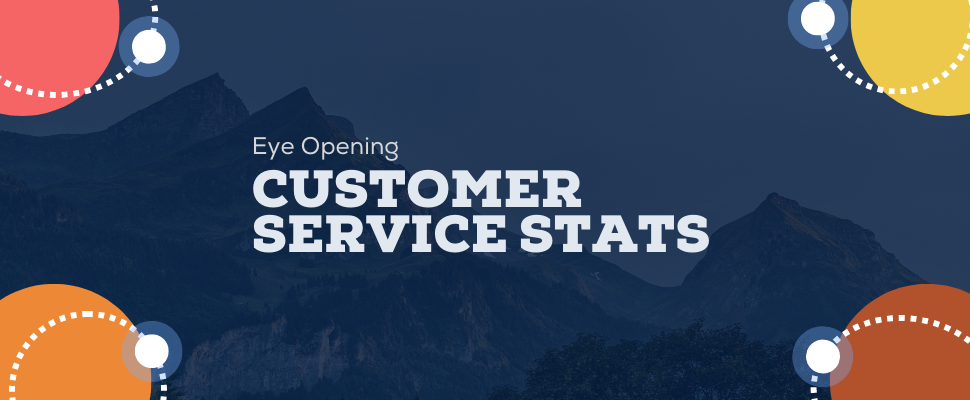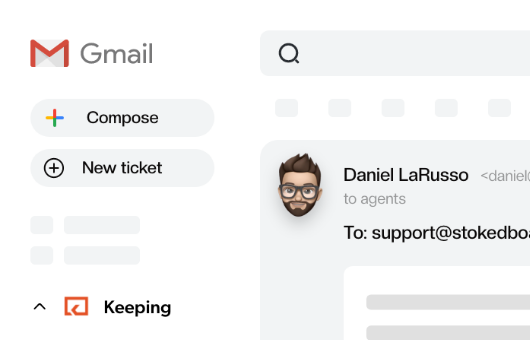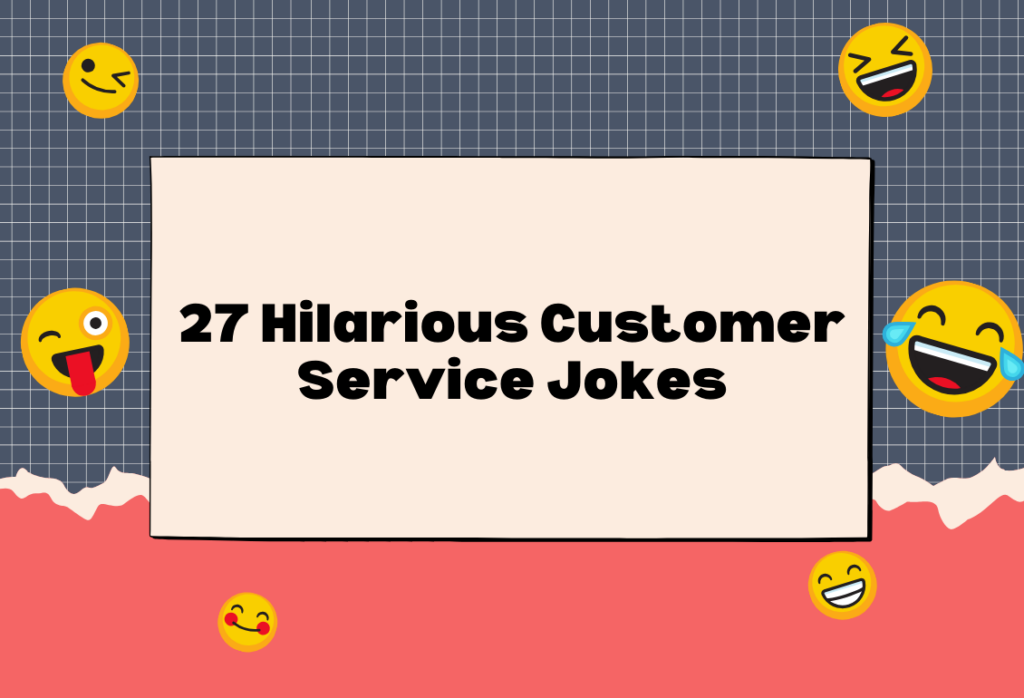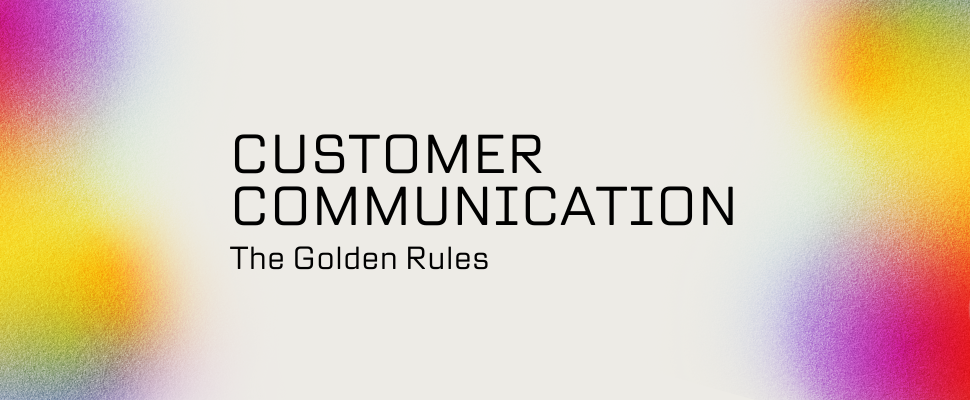
61 Eye Opening Customer Service Statistics for 2022
For you to be able to put up exemplary customer service efforts, it is crucial to look at industry standards and customer service data. We've done the research for you and brought 61 customer service statistics you need to see.
96% of customers will leave a company if they encounter poor customer support—says Forbes. Today’s customer wants to be treated well, and they’re not willing to settle for anything less.
Is your brand providing exceptional customer service? Are you able to meet the latest customer service expectations? These are the questions you should be asking yourself.
But you are not the customer, so how do you get the answer? You can get the answers only when you’ve seen top customer service statistics. We’ve got you covered here.
We did the extensive research (the hard part of the job!) and have compiled a list of 61 customer service statistics that will help you understand what your customer service agents need to work on.
Ready to check them out? Let’s begin!
Why do customer service statistics matter?
Before you read the customer service statistics, you need to understand why reading customer service statistics is essential. The importance may be evident to some, but you may not have thought about the following benefits. Let’s look at them.
Better customer service strategies
Great customer service starts with a strategy. You need to have a plan of action that’ll be used to ensure good customer service experiences. Your company’s customer service can only be improved when you know what frustrates the customer and what makes them happy. Customer service stats serve as the perfect source to get this insight—and as a result, formulate the ideal customer service strategy that delivers what the customers want.
Get ahead of your competitors
By following customer service statistics, you get an edge over your competitor. You can improve your customer service and make customer service the key differentiator between you and your competitor.
Bad customer service statistics give you an insight into what you should not be doing. Seeing status that underline a positive customer service experience tell you what you should be doing. Your brand should always strive to improve its customer service efforts, and statistics about customer service are the perfect way to get improvement ideas.
Train your Agents Better
Ultimately it’s your customer support agents who are going to interact with customers. If they don’t do a good job, the loss is yours. So, providing the proper training becomes your responsibility too.
When your agents are provided adequate training that has been designed keeping in mind the latest customer service statistics, customer service teams are able to do a better job. For example, when a huge number of people complain about not understanding how your product or service works, you’ll know that you need to provide complete product knowledge to your agents.
Stronger sales funnel
Yes, you read that right. When you keep up with statistics on customer service, you’re able to make constant improvements. Constant improvement means more and more instances of good customer experience. This leads to a stronger sales funnel. More and more people start recommending your brand, and you become a top choice in your industry.
61 customer service statistics
Now that you know how customer service statistics can help your business, here are 61 customer service statistics ranging from the impact of customer service to statistics about reasons for customer frustration.
Stats About the Impact of Good Customer Service
Statistics about the impact of excellent customer service serve as the perfect example from which your business can take inspiration as to what your customer service should also look like. Take a look at these good customer service statistics to improve your customer service reps.
- Consumers from The United States are willing to pay 17% more to buy from a company with excellent customer service. (American Express)
- Employee engagement is 1.5 times higher in businesses that thrive at providing excellent customer service than those that don’t. (Experience Matter Benchmark Report)
- 35.2% of US customers give 5-star ratings because they had a good customer service experience. (Netomi)
- Good customer service was recognized as the most crucial factor in purchasing decisions by 83% of customers—apart from the pricing and product. (Khoros)
- Customers who receive outstanding customer service are 93% more likely to return to a business. (Hubspot Research)
- A satisfied customer will share their positive experience with about 11 people and recommend your brand as well. (American Express)
- Businesses that prioritize the customer experience see 4-8% better revenue growth than the rest of their competitors. (Bain and Company)
- Businesses that prioritize providing better customer service can grow their revenues by 4% to 8% above their market. (Bain and Company)
As evident by the statistics above, good customer service plays a crucial role in the development and sustenance of your business. Not only are customers willing to pay more for good customer service, but employees also trust your company when you’re providing good customer service.
Making sure you have good customer service becomes essential when sales, brand reputation, employee retention, and brand loyalty are all dependent on it.
Stats about the Impact of Bad Customer Service
You’ve seen the impact good customer service can make on your business. Now it’s time to see what bad customer service could do to your business. Here are statistics showing the impact of subpar customer service:
- 61% of consumers who had poor customer service experiences reviewed a company poorly. (Arena CX)
- Nearly 78% of customers have abandoned a purchase after having a bad customer service experience. (Glance eBook)
- Customers’ most prominent sources of annoyance, according to 33% of respondents, are waiting on hold and having to repeat themselves to different support agents. (Hubspot Research)
- Less than 4% of customers are willing to stick around with a company that provides a bad customer service experience. 27.9% of people are entirely ready to make a switch to the competitor for good customer service. (Forbes)
- A disappointed customer will tell twice as many people about their poor customer service as a delighted customer will about their positive experience. (CCMC)
- U.S. businesses lose $1.6 trillion in revenue due to customers switching brands because of subpar service. (Forbes)
- Following two to three instances of poor customer service, 60% of American customers say they’ll think about switching brands. (American Express)
- A dissatisfied customer will anti-refer your brand and share their negative customer service experience with about 15 people. (American Express)
Bad customer service has multiple repercussions. In the longer scheme of things, it could very well be the reason for your brand failing. People will quickly switch to competitors, you’ll see a fall in revenue, and negative word of mouth will prevail. The impact of bad customer service is a lot, and you should avoid it at all costs.
Stats about The Influence of Customer Service on Brand Loyalty
Brand loyalty is what will keep your business going in the long run. A loyal customer is an asset, so how can you use customer service to turn your customers into loyal brand advocates? Below are some interesting statistics demonstrating the influence of customer service on brand loyalty.
- Spending by loyal customers is 67% higher than that of new ones. (Thanx)
- 83% of customers agreed that they feel much more brand loyalty towards the brands that respond and resolve their queries. (Khoros)
- In order for them to feel loyal to a business, almost three out of five customers say that the company must provide excellent customer service. (Zendesk)
- According to 73% of consumers, a positive experience is essential in promoting brand loyalty. (PWC)
- 56% of people say that customer service is the factor that makes them loyal to a brand. Furthermore, when a customer is loyal:
- About 86% will tell friends and family about a business.
- 66% are inclined to post a favorable internet review following a satisfying customer service experience.
- 46% will continue to be loyal despite a negative customer service experience in the future. (KPMG Research)
- About 50% of a company’s loyal customers have moved to a rival who has managed to be more relevant and better meet their needs. (InMoment)
- At least a 25% increase in earnings is correlated with a 5% improvement in customer retention. (Bain and Company)
Having consistently excellent customer experiences will make your customers loyal to your brand. Once turned into loyal customers, your brand will become their top recommendation. Do you know what a great way to bring brand loyalty is? Its personalization. Let’s talk about that now!
Stats about the Impact of Personalization
“I don’t like when a brand curates an offer or an experience specific to me and my needs,”—said no customer ever.
Your customers expect and love personalization. The expectation and appreciation of personalization begin from recommending specific products for their needs and go on to offering personalized customer support.
Personalization can begin from something as minor as using the customer’s name in conversations and can be as huge as offering personalized discounts. Take a look at these statistics to understand the impact and expectations about personalization.
- After seeing a personalized deal, nearly 49% of shoppers have bought a product they did not initially want to buy. (Grow Segment)
- An honest human voice is preferred by 75% of consumers over a carefully produced brand message. (Khoros)
- 76% of B2B buyers and 63% of consumers expect businesses to be aware of their specific needs and expectations. (Salesforce Research)
- 67% of customers hang up in frustration when they are unable to speak with a customer support agent. (Glance)
- Because their experience wasn’t personalized, one-third of customers have stopped using a brand. (Accenture)
- 80% of customers claim that if a brand offers personalized experiences, they are more likely to do business with it. (Epsilon)
- Customers are 2.1 times more likely to view personalized offers as important versus unimportant. (Salesforce Research)
- After interacting with personalized content, 82% of consumers have a more favorable opinion of a brand. (Demand Metric)
It is clear from the numbers above that today’s customer is expecting a personalized response. Not only do they appreciate the act of personalization, but it also leads them to make a purchase decision.
Stats about Acting on Feedback
Feedback from customers is constant, and more and more of them want you to take it seriously and do something about it. Here are some statistics about customer feedback you should look at:
- 77% of customers believe that brands perform better if they actively seek out and use customer feedback. (Microsoft)
- Customers who are unhappy with a product or service are 47% more likely to complain online. Your chances of getting feedback will increase if you are active on social media channels. (Sprout Social)
- 53% of consumers think no one takes action on their input. (Microsoft)
- When a company responds to its customers’ online feedback, they spend about 49% more money with that company. (Womply)
- Companies run the risk of 15% more churn if they don’t respond to customer feedback. (Chatmeter)
- A whopping 52% of people worldwide think that businesses should respond to customer feedback. (Microsoft)
Stats About Customer Service Channels
Thanks to technological advancements, today, customer service has expanded to different channels. However, it’s not possible for your brand to be present everywhere.
How would you prefer to get in touch with customer care representatives: by phone, chat, Facebook message, text, web form, email, or tweet? Because they are attempting to be everywhere at once, many businesses struggle with providing excellent customer service.
Overextending yourself will cause customer service staff to deliver subpar service across all channels. Result? You need to limit your customer support channels. What customer care channels ought you prioritize, then? See what the statistics have to say.
Omnichannel Support
- More than 35% of consumers anticipate being able to speak with the same customer support agent across different customer support channels. (Zendesk)
- Compared to 33% of firms with terrible omnichannel customer experiences, companies with strong omnichannel customer interaction typically retain 89% of their customers. (Aberdeen Group)
- Since 2012, the percentage of businesses investing in the omnichannel experience has increased from 20% to more than 80%. (PWC)
Live Chat
- 63% of consumers who spend $250–500 per month online are inclined to make a purchase from businesses that offer live chat. Furthermore, 52% of customers are likely to become loyal to a brand that provides live chat. (Kayako)
- Live chat is rated as the most effective way for customers to communicate with businesses by about 73%. (Invesp)
- The primary factor driving 79% of consumers to pick live chat is receiving a prompt response to their inquiries. (Invesp)
Phone Support
- More than two out of every five customers prefer calling customer support. (Statista)
- More than 76% of all customers prefer the conventional method of phone calls to contact customer support agents. (CFI)
- 37% of respondents stated they would like to be added to a queue and called back when an agent becomes available in a long wait; 24% would prefer to remain on hold, and 20% would hang up and try again. (Business Wire)
Social Media
- The cost per interaction can be drastically decreased by switching to social media customer support. On average, the cost of handling inbound telephone calls is between $6 to $8, whereas, for social media, it is less than $1. (McKinsey)
- 69% of American Facebook users who message brands claim that doing so increases their trust in the company. (Hootsuite)
- Responding to a customer’s complaint on social media can boost that advocacy by up to 25%. (Convince and Convert)
- According to Gen Z consumers, email is the most popular customer care communication channel, and they claim that it is their favorite method of contact with companies. (Hiver Research)
As you can see, different customers want you to be present on various channels. Depending on your capabilities, you decide what is the best channel for you. Omnichannel support desks like Zendesk and Freshdesk allow you to bring support requests from different channels into a single helpdesk—making tasks easier for your customer support team.
If you’re a business that gets most of its customer support requests via Email, Keeping is the best solution for you. We at Keeping convert your Gmail inbox into a fully featured email helpdesk to help you deliver the best customer experience.
Stats on Self-Service in Customer Support
No matter how big your customer support team is, self-service is always a good idea. Not only does it reduce the volume of tickets, but it also makes your customers feel empowered. Not to mention, they were spared the time-consuming task of contacting a customer service person. Here are some interesting customer service self-service statistics:
- 67% of customers said they prefer self-service over talking to a customer support representative. (Zendesk)
- 73% no longer pick up the phone or contact a customer support representative; instead, they search the company website and the FAQ section for answers. (Software Advice)
- Across all industries, 81% of customers try to resolve issues on their own before contacting a live professional. (Harvard Business Review)
- 90% of consumers around the world anticipate companies and businesses to offer an online self-service support facility. (Microsoft)
The numbers say it all. Your customers are expecting you to provide self service tools like a knowledge base or an FAQ section. They prefer it and appreciate it.
Stats on Customer Frustration
Knowing what frustrates your customers is essential so that you can steer clear of those things. As a business, you may be unaware of different things that frustrate a customer. Take a look at these statistics to understand what frustrates a customer in terms of customer support:
- Brands that are unresponsive on social media and via email are increasingly annoying to customers. Between 2019 and 2020, the number of complaints about unresponsive brands on social media and email increased by 5.7 times. (Drift)
- According to 30% of customers, the most frustrating part of receiving customer service assistance is being unable to speak with a live representative. (PC Executives)
- When an agent is uninformed, 84% of customers become irritated. (Kolsky)
- The inability to completely articulate their problem (ranking third) and a lack of human interaction (ranking fourth) were the top three most frustrating customer support difficulties, respectively, according to the majority of people (69%) and (67%) of respondents. (PRNewswire)
A frustrated customer is each company’s nightmare. But what makes them so frustrated is what your business should focus on.
From the statistics above, we can see that factors ranging from unresponsiveness, no human point of contact, and no facility to explain their issue correctly lead to frustration. Now, this is what your business needs to avoid.
Improve your Customer Service with Keeping
Whether or not you meet a customer’s expectations depends on their judgment. The bar for excellent customer service is high. These statistics should have taught you that it takes seriously fantastic customer service to stand out from the competition.
It’s essential to keep in mind that customers today have a significant influence on how successfully your company does. They also have more choices than ever before.
Keeping helps you deliver excellent customer service by offering an email help desk designed to make delivering outstanding customer support easier for your teams. Join Keeping today and start providing the kind of customer support your consumers expect.
Join 150+ teams that are sharing inboxes with us
The easiest way to upgrade your shared Gmail account. There’s no credit card is required.






